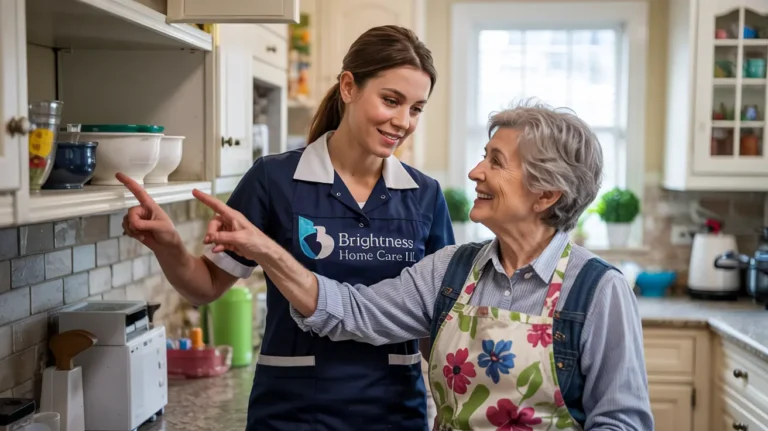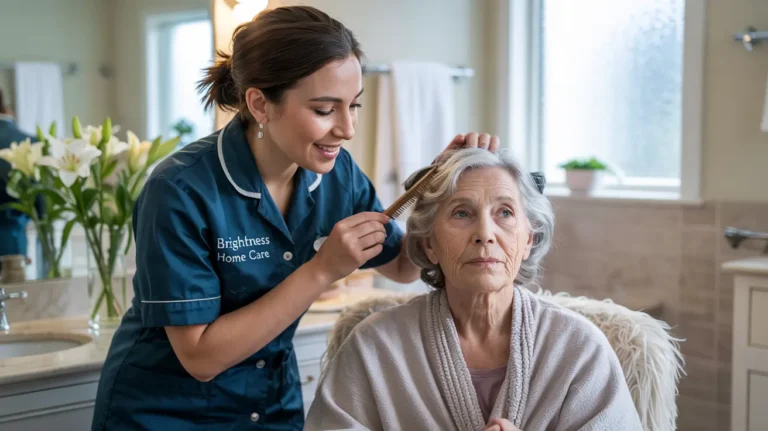Personal Care Assistance Cost in Indianapolis: What You Need to Know
Did you know that nearly 70% of adults over 65 will need some form of personal care assistance in their lifetime? I was shocked when I first learned this statistic while researching care options for my own mother. The realization hit me hard – understanding personal care costs isn’t just important, it’s essential for almost all of us at some point!

If you’re looking into personal care assistance in Indianapolis, you’re probably feeling a bit overwhelmed by all the options and pricing structures. Trust me, I’ve been there! When I started navigating this journey, I found myself drowning in brochures and websites that seemed to hide the actual costs behind vague language.
Personal care assistance costs in Indianapolis can vary widely depending on several factors – from the level of care needed to the provider you choose. And let’s be honest, finding affordable quality care feels like searching for a unicorn sometimes! But don’t worry, I’ve done the legwork and am here to share everything I’ve learned about personal care costs in the Indianapolis area.
In this guide, I’ll break down the typical costs you can expect, the factors that influence pricing, and how providers like Brightness Home Care LLC are making quality care more accessible for Indianapolis residents. Whether you’re planning for yourself or a loved one, understanding these costs now will save you tons of headaches (and potentially dollars!) down the road.
What Is Personal Care Assistance and Who Needs It?
Personal care assistance is something I wish someone had explained to me clearly from the get-go! Basically, it involves help with everyday activities that most of us take for granted until we can’t do them independently anymore. This includes things like bathing, dressing, grooming, toileting, meal preparation, medication reminders, and light housekeeping.
I remember when my aunt insisted she didn’t need any help – she’d been independent her whole life! But when I visited and found expired food in her fridge and noticed she was wearing the same clothes for days, I realized personal care wasn’t just a luxury – it was a necessity for her safety and dignity.
Personal care assistance isn’t just for the elderly, though that’s often what people think first. It’s also essential for adults with disabilities, individuals recovering from surgery or illness, and people with chronic conditions that limit their ability to perform daily activities. I once worked with a 42-year-old neighbor who needed temporary personal care after a serious car accident – it really opened my eyes to how anyone might need these services at any time.

You might need to consider personal care assistance if you notice a loved one struggling with personal hygiene, having difficulty managing medications, losing weight unexpectedly, or showing signs of isolation or depression. I missed these signs with my own father until his doctor pointed them out – wish I’d known what to look for earlier!
In Indianapolis, I’ve seen families typically start looking into personal care options when they notice their loved one’s home becoming increasingly cluttered or unkempt, when there are multiple falls or close calls, or when managing chronic health conditions becomes overwhelming. The need often becomes apparent during holiday visits when family members notice changes they hadn’t seen during regular phone calls.
For many Indianapolis families I’ve talked with, the tipping point comes when they realize their loved one is skipping meals because cooking has become too difficult, or when medication errors lead to health complications. It’s not always an easy conversation to have, but recognizing these signs early can prevent more serious problems down the road.
Understanding Personal Care Assistance Costs in Indianapolis
Let’s talk numbers – because that’s what kept me up at night when I was figuring this out for my family. In Indianapolis, personal care assistance typically costs between $20 and $30 per hour from established agencies. I nearly fell off my chair when I first heard that figure! That adds up quickly if you need daily help.
When I was shopping around, I noticed independent caregivers sometimes charge less, around $15-25 per hour, but then you’re taking on the responsibilities of being an employer – taxes, background checks, liability – all stuff I wasn’t prepared to handle while also worrying about my mom’s care.
Compared to the national average of $25-35 per hour, Indianapolis is actually slightly more affordable for personal care services. Small victory there! But these costs can still be significant for many families – I know they were for mine.
One thing that tripped me up was understanding how agencies calculate their rates. Some charge strictly by the hour, while others have minimum visit requirements (often 2-4 hours). I remember scheduling a 30-minute medication check only to find out later there was a 2-hour minimum charge! Lesson learned the hard way.
Agencies like Brightness Home Care LLC typically use hourly rates but offer better value when you need more hours of care. I discovered this when comparing costs for my dad – the rate dropped from $27 to $24 per hour when we increased from 10 to 20 hours weekly. It’s worth asking about these sliding scales when you’re calculating costs.
Daily rates are another option that can be more economical for those needing full-day assistance. In Indianapolis, I’ve seen daily rates ranging from $200-350 for 8-12 hours of care. This was actually a better deal for my aunt who needed someone most of the day while my uncle was at work.
Weekend and holiday rates caught me by surprise too – many agencies charge 1.5 times their standard rate for these times. I learned to schedule family visits on holidays to avoid these premium charges while ensuring mom still had company and care when she needed it.
Factors That Influence Personal Care Assistance Pricing
I quickly discovered that not all personal care is priced the same, and for good reason. The level of care needed is probably the biggest factor affecting cost. Basic companion care with light housekeeping and meal prep typically falls at the lower end of the price spectrum, while complex care for conditions like advanced dementia or clients with mobility challenges commands higher rates.
I learned this the hard way when my mother’s Parkinson’s progressed, and her care needs suddenly required someone with specialized training. Our costs increased by about 25% – an expense we hadn’t budgeted for in our long-term planning.
Caregiver qualifications and training significantly impact pricing too. Agencies that employ Certified Nursing Assistants (CNAs) or Home Health Aides with specialized training typically charge more than those using caregivers with minimal formal training. When interviewing agencies, I always ask about their training requirements – it’s worth paying a bit more for someone who knows what they’re doing!

The duration and frequency of care needed also affects the bottom line. Almost all agencies offer better hourly rates for clients who need more hours of service. When I only needed someone to check on my dad for an hour each day, the hourly rate was at the premium end. But when we increased to 4 hours daily, the rate dropped by about $3-4 per hour. Those savings really add up over time!
Location within Indianapolis plays a role too. I found that providers servicing the northern suburbs like Carmel and Fishers sometimes charge 10-15% more than those focused on the city center or southern areas. Travel time and distance are real factors in pricing, especially if your loved one lives in an outlying area.
Agency vs. independent provider costs present another consideration. I initially went with an independent caregiver who charged less per hour, but when she got sick, we had no backup. That’s when I switched to an agency like Brightness Home Care LLC – slightly more expensive but worth every penny for the reliability and peace of mind knowing someone would always show up.
Something I rarely see discussed is how client behaviors might affect pricing. When my neighbor’s father became verbally aggressive due to dementia, some agencies charged a higher rate due to the challenging behaviors. It’s an uncomfortable topic, but one worth discussing upfront if your loved one has behavioral challenges.
Payment Options for Personal Care Assistance in Indianapolis
Figuring out how to pay for personal care was honestly the most stressful part for me. Most families in Indianapolis end up paying out-of-pocket for personal care, which was a huge shock to my system. I had to dig into savings I’d been setting aside for a kitchen remodel – not ideal, but mom’s care came first.
I made the mistake of assuming Medicare would cover personal care assistance. Boy, was I wrong! Medicare typically doesn’t cover non-medical personal care services. They’ll cover some home health care if it’s ordered by a doctor and you’re homebound needing skilled nursing care, but routine personal care? You’re on your own, unfortunately.
Medicaid in Indiana can be a lifeline if your loved one qualifies financially. The Aged & Disabled Waiver program might cover personal care services, but there’s often a waiting list. I helped my aunt apply, and while she eventually got coverage, we waited nearly 8 months before services began. Be prepared for paperwork – lots of it!
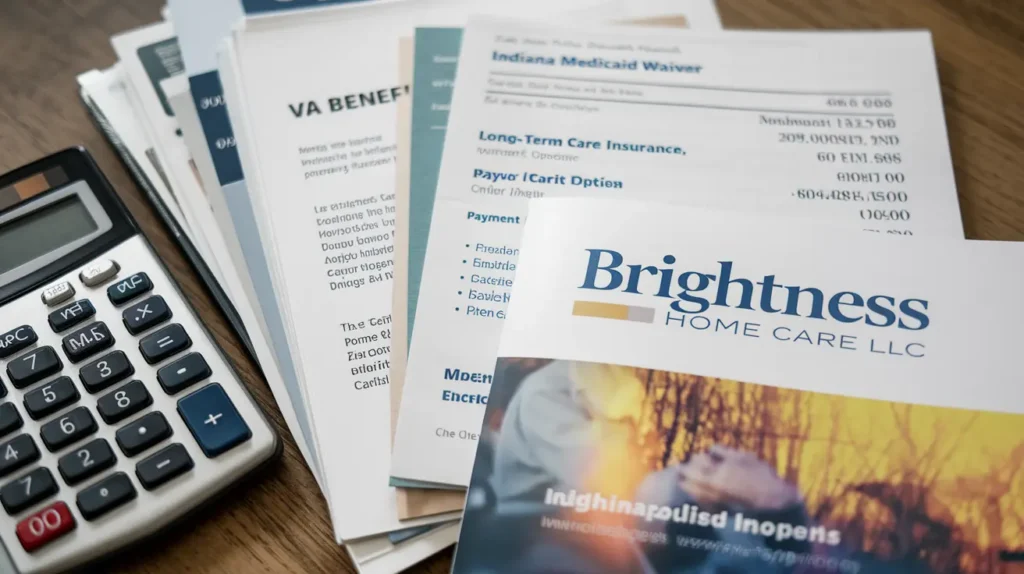
Long-term care insurance was something my father-in-law thankfully had in place, and it covered a significant portion of his personal care needs. If you’re planning ahead, this is definitely worth considering, though premiums can be steep if you wait until your 60s to purchase a policy.
For veterans, I discovered the VA Aid & Attendance benefit that helped supplement my uncle’s care costs. He served in Vietnam, and this benefit provided nearly $2,000 monthly toward his care expenses. The application process was lengthy, but the financial relief was substantial.
One option I rarely hear discussed is life insurance conversion. My colleague converted her mother’s life insurance policy into a benefit that could be used while she was still alive to pay for care. It provided less than the death benefit would have, but offered immediate funds when they were most needed.
Brightness Home Care LLC was particularly helpful in navigating payment options. They guided me through the process of applying for benefits I didn’t even know existed and offered payment plans when we had a temporary cash flow issue. Their financial counseling honestly saved us thousands of dollars over the course of my father’s care.
Some families I’ve spoken with have gotten creative with funding arrangements. One friend set up a family cost-sharing plan where multiple siblings contributed monthly to their parent’s care fund. Another used a reverse mortgage to help cover long-term care costs while allowing their mother to remain in her home.
How Brightness Home Care LLC Makes Quality Care Affordable
When I finally found Brightness Home Care LLC at 4911 West 38th Street in Indianapolis, it was like finding water in a desert. Their transparent pricing structure was refreshing after dealing with agencies that seemed to have hidden fees around every corner. They provided a detailed written estimate that outlined exactly what services were included and what would cost extra.
What impressed me most was how they customized care plans to control costs. Rather than pushing for more hours than needed, they helped us identify the specific times of day when assistance was most critical. This targeted approach saved us nearly $600 monthly compared to the “standard package” another agency had recommended.
Their staff qualifications gave us real value for our money. All their caregivers had at minimum CNA certification with specialized training in dementia care, something that was essential for my mother’s condition. I noticed the difference immediately – their team knew exactly how to redirect mom when she became confused, whereas our previous caregiver would get frustrated.
The free initial assessment was a game-changer. Brightness Home Care sent a registered nurse to evaluate my dad’s needs at no charge, creating a comprehensive care plan that other agencies wanted to bill us for. This thorough assessment meant we avoided paying for unnecessary services while ensuring all critical needs were met.
Their payment options provided flexibility I hadn’t found elsewhere. When my insurance reimbursements were delayed, they worked with us on a payment plan rather than discontinuing services. That kind of understanding is priceless when you’re dealing with the stress of caring for a loved one.
What really sets Brightness Home Care apart is their specialized services that maximize value. For instance, they combined personal care with medication management during the same visit, saving us from paying for two separate services. Their caregivers are cross-trained to handle multiple needs, eliminating the need for different specialists each charging their own rates.
I was surprised when they connected us with free community resources that complemented their paid services. Their social worker helped us access a free weekly respite program through a local church, giving us additional support without adding to our financial burden.
They even offered a discount program for consistent scheduling, providing a 5% reduction when we committed to regular weekly hours. These savings added up considerably over time, making ongoing care more sustainable for our family budget.
Questions to Ask When Comparing Personal Care Assistance Costs
When I started comparing agencies, I wish someone had given me a list of questions to ask. First and foremost, ask about their pricing structure – is it truly hourly, or do they round up in 15 or 30-minute increments? I once got billed for a full hour when the caregiver was only there for 35 minutes!
Hidden fees are everywhere if you don’t ask specifically about them. Does the agency charge extra for transportation if the caregiver takes your loved one to appointments? Is there an additional charge for light housekeeping or meal preparation? One agency I contacted charged a separate “meal planning fee” on top of their hourly rate!
Minimum hour requirements tripped me up in the beginning. Some agencies required a 4-hour minimum per visit, which was more than we needed initially. Brightness Home Care worked with us to provide 2-hour visits, which fit both our needs and budget much better.
Cancellation policies vary widely and can cost you if you’re not careful. I learned this lesson when my mom was hospitalized suddenly, and we still got charged for the first two days of scheduled care because we couldn’t provide 48 hours’ notice. Now I always ask about their policy for emergency situations.
Staff turnover rates directly impact care quality and consistency. High turnover often indicates poor management or compensation issues that eventually affect client care. When I asked Brightness Home Care about their retention rates, they shared that their average caregiver had been with them over three years – far better than the industry average of less than one year.
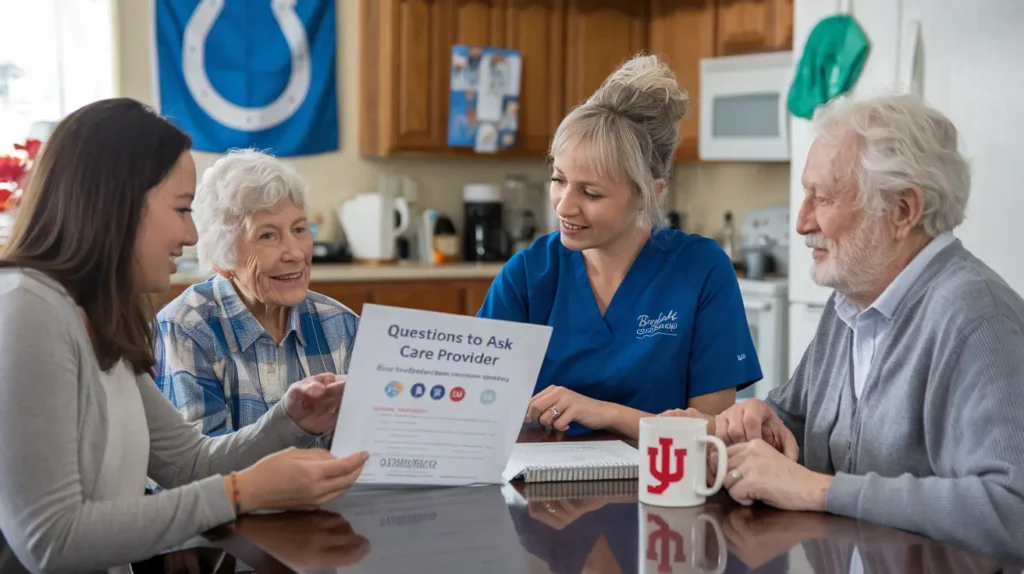
Training and supervision costs are built into agency rates, but the level varies dramatically. Some agencies provide minimal training while others, like Brightness Home Care, invest significantly in ongoing education for their staff. This training directly affects the quality of care your loved one receives, so it’s worth understanding what you’re paying for.
I also recommend asking about rate increases. Most agencies implement annual price increases, but the percentage can vary widely. One agency increased our rates by 8% after just six months, while another maintained the same rate for two years. Understanding this upfront helps with long-term budgeting.
Don’t forget to ask about shift differentials. Weekend care, holiday coverage, and overnight assistance often come with premium rates. If your loved one needs around-the-clock care, these differences can significantly impact your monthly costs.
Tips for Managing Personal Care Assistance Expenses
Creating a realistic budget was my first step in managing care costs. I tracked all expenses for the first three months to identify patterns and opportunities for savings. This exercise revealed that we were paying for some services my father could still manage independently with the right adaptive equipment.
Combining family care with professional services saved us significant money. My sister and I each took one day per week, reducing professional care needs from seven to five days weekly. This arrangement saved us nearly $600 monthly while still ensuring quality care every day.
I was surprised to learn about tax deductions available for dependent care and medical expenses. Consulting with an accountant revealed we could deduct a portion of mom’s care costs since they exceeded 7.5% of our adjusted gross income. These tax savings effectively reduced our annual care costs by about 22%.
Home modifications proved to be excellent investments that reduced care hours needed. Installing grab bars in the bathroom and a ramp at the entryway allowed my father to manage more independently, reducing our weekly care needs by about 5 hours. The one-time cost of these modifications was recouped in just two months of reduced care expenses.
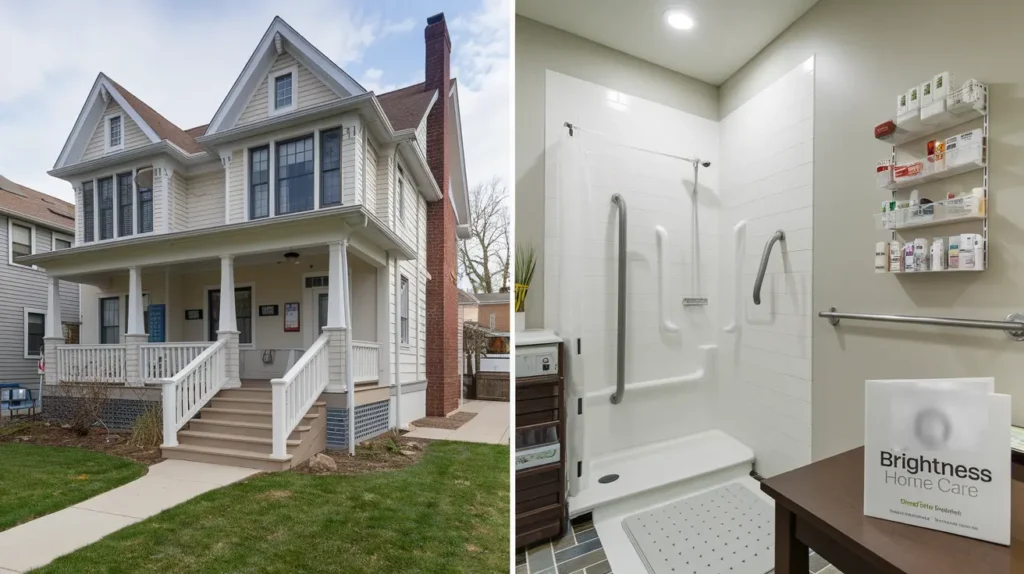
Community resources in Indianapolis provided valuable supplementary support. The Catholic Charities of Indianapolis offered a volunteer visitor program that provided companionship one afternoon weekly, reducing our paid care needs. Similarly, Meals on Wheels delivered lunch daily for a fraction of what we’d been paying our caregiver to prepare meals.
I discovered that consolidating care into fewer, longer days often reduced overall costs. Instead of having a caregiver come for 2 hours daily, we rescheduled to 4-hour visits three times weekly. This reduced the total hours slightly while eliminating multiple minimum charges and travel time.
Technology investments yielded surprising savings. A medication dispenser with alarms reduced our need for medication management visits, while a video monitoring system gave us peace of mind between caregiver visits. These technologies paid for themselves within months through reduced care hours.
Reassessing care needs regularly prevented us from paying for unnecessary services. Every three months, we evaluated whether the current care plan still matched my mother’s needs. As her condition improved following physical therapy, we were able to reduce certain services, saving nearly $400 monthly.
Don’t be afraid to negotiate! I found that some agencies were willing to match competitors’ rates or offer discounts for prompt payment. Brightness Home Care LLC provided a 3% discount when we set up automatic payments, which added up to meaningful savings over time.
Conclusion
Navigating the costs of personal care assistance in Indianapolis doesn’t have to be overwhelming. Throughout my journey helping both my parents and several relatives find appropriate care, I’ve learned that understanding the factors influencing costs and exploring all payment options makes a tremendous difference in making quality care affordable.
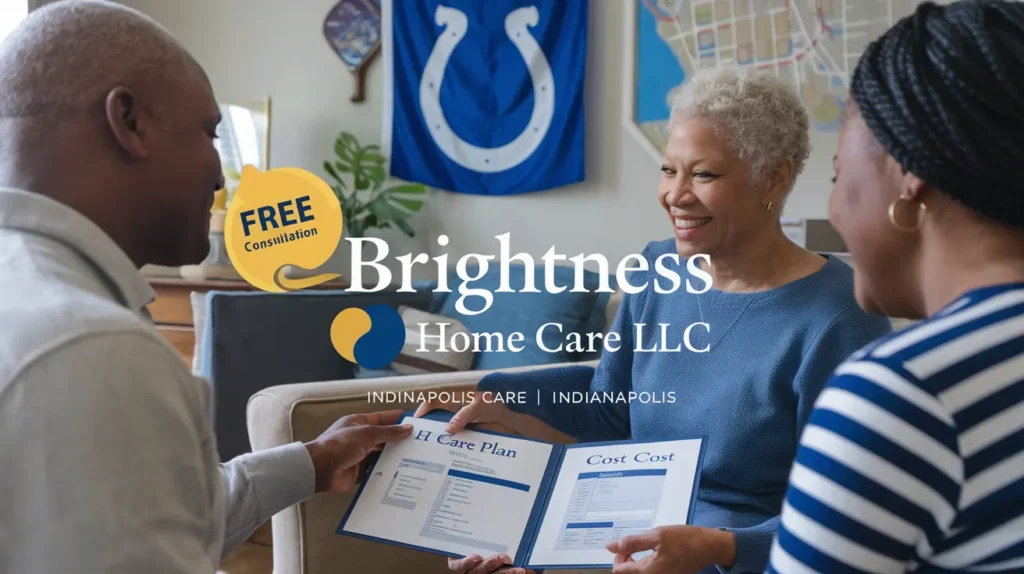
Remember that the cheapest option isn’t always the best value. The care provider who takes the time to truly understand your loved one’s specific needs – both current and anticipated – will ultimately deliver better care and potentially save you money by avoiding complications or unnecessary services.
If you’re feeling overwhelmed by options and costs, I encourage you to reach out to Brightness Home Care LLC at their Indianapolis location. Their team provided my family with incredible guidance, helping us navigate complex decisions while keeping our budget intact. Their transparent approach to pricing and genuine commitment to client wellbeing stands out in an industry where finding trustworthy providers can be challenging.
Don’t hesitate to schedule a free consultation to discuss your specific situation. The peace of mind that comes from having a clear understanding of costs and confidence in care quality is truly priceless. I’d love to hear about your experiences navigating personal care costs – what challenges have you faced, and what solutions have worked for your family?



